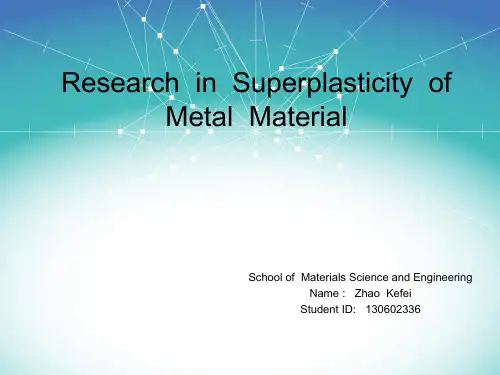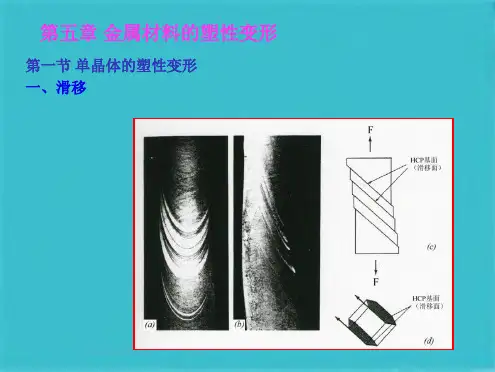processing in 1928.
In 1934, Pearson dramatically demonstrated, using a Bi-Sn sample that had been deformed to nearly 2000% and then coiled (as shown in Figure 2.4), that unusually large elongations could be achieved in certain fine-structured, twophase materials.
11
2 超塑性研究的发展概况
2.1 Before 1962
✓Work in the Soviet Union was underway to specifically address the phenomenon,
and Bochvar and Sviderskaya coined the term sverhplastichnost (ultrahigh plasticity)
3
一、超塑性的研究与发展
4
内容提要
1 超塑性的概念 2 超塑性研究的发展概况 3 超塑性的分类 4 超塑性成形的优点与问题 5 超塑成形应用实例
5
1 超塑性的概念
塑性:
是金属的重要属性之一,它指的是金属在外力作用下,无损而永久地改变形状的能力[1]。
超塑性:
(1)金属和合金在特定组织结构和变形温度速度条件下,可以呈现异常高的塑性,延伸率可 达百分之几百,甚至达百分之一千或二千以上,变形抗力也很小,这种现象称为超塑性[1]。
金属特种加工理论与技术
金属超塑性成形理论与技术
(16课时)






